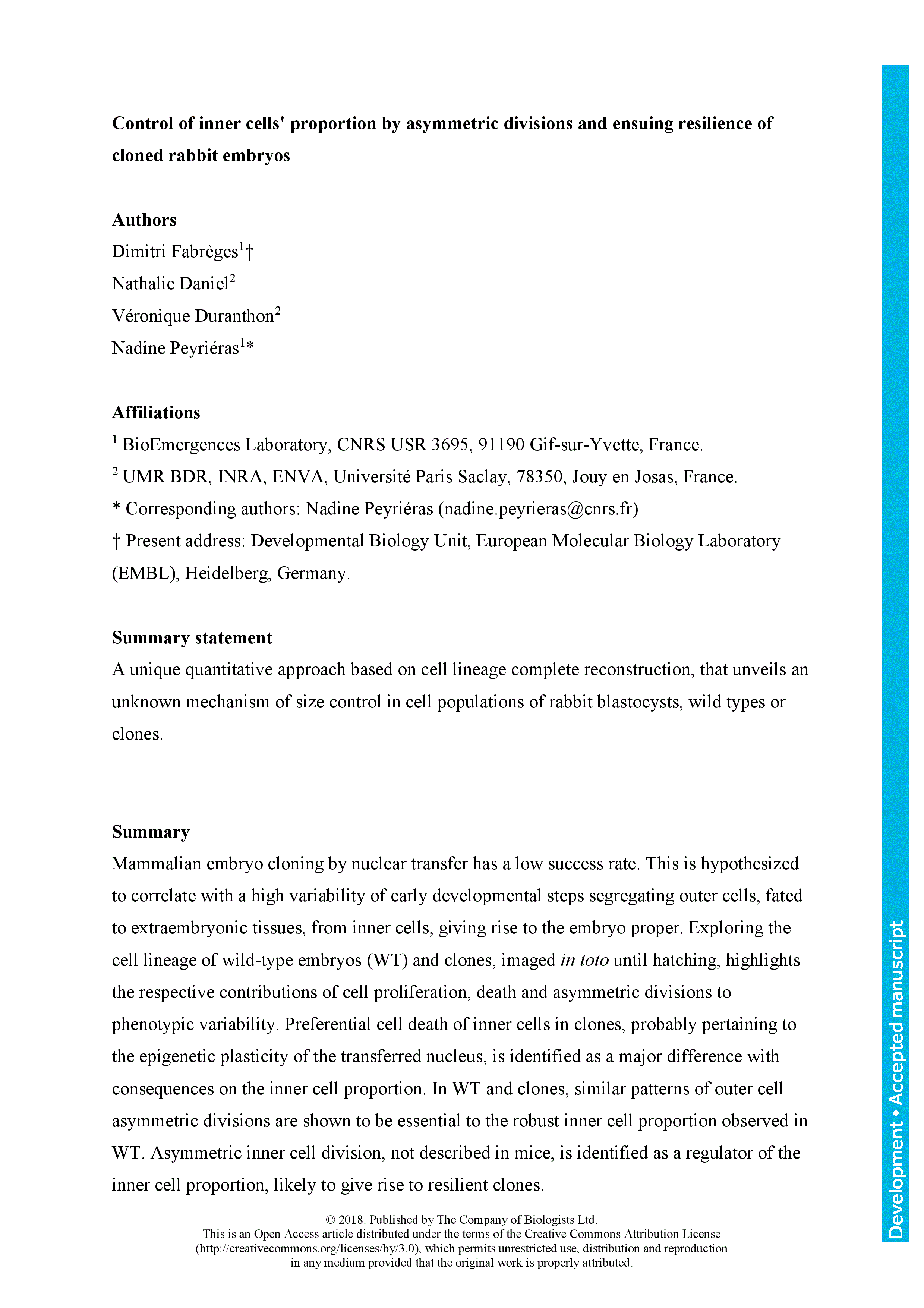Mammalian embryo cloning by nuclear transfer has a low success rate. This is hypothesized to correlate with a high variability of early developmental steps segregating outer cells, fated to extraembryonic tissues, from inner cells, giving rise to the embryo proper. Exploring the cell lineage of wild-type embryos (WT) and clones, imaged in toto until hatching, highlights the respective contributions of cell proliferation, death and asymmetric divisions to phenotypic variability. Preferential cell death of inner cells in clones, probably pertaining to the epigenetic plasticity of the transferred nucleus, is identified as a major difference with consequences on the inner cell proportion. In WT and clones, similar patterns of outer cell asymmetric divisions are shown to be essential to the robust inner cell proportion observed in WT. Asymmetric inner cell division, not described in mice, is identified as a regulator of the inner cell proportion, likely to give rise to resilient clones.
Control of inner cells' proportion by asymmetric divisions and ensuing resilience of cloned rabbit embryos
Present address: Developmental Biology Unit, European Molecular Biology Laboratory (EMBL), Heidelberg, Germany.
Currently Viewing Accepted Manuscript - Newer Version Available
Dimitri Fabrèges, Nathalie Daniel, Véronique Duranthon, Nadine Peyriéras; Control of inner cells' proportion by asymmetric divisions and ensuing resilience of cloned rabbit embryos. Development 2018; dev.152041. doi: https://doi.org/10.1242/dev.152041
Download citation file:
Advertisement
Call for papers: Uncovering Developmental Diversity

Development invites you to submit your latest research to our upcoming special issue: Uncovering Developmental Diversity. This issue will be coordinated by our academic Editor Cassandra Extavour (Harvard University, USA) alongside two Guest Editors: Liam Dolan (Gregor Mendel Institute of Molecular Plant Biology, Austria) and Karen Sears (University of California Los Angeles, USA).
Choose Development in 2024

In this Editorial, Development Editor-in-Chief James Briscoe and Executive Editor Katherine Brown explain how you support your community by publishing in Development and how the journal champions serious science, community connections and progressive publishing.
Journal Meeting: From Stem Cells to Human Development

Register now for the 2024 Development Journal Meeting From Stem Cells to Human Development. Early-bird registration deadline: 3 May. Abstract submission deadline: 21 June.
Pluripotency of a founding field: rebranding developmental biology

This collaborative Perspective, the result of a workshop held in 2023, proposes a set of community actions to increase the visibility of the developmental biology field. The authors make recommendations for new funding streams, frameworks for collaborations and mechanisms by which members of the community can promote themselves and their research.
Read & Publish Open Access publishing: what authors say

We have had great feedback from authors who have benefitted from our Read & Publish agreement with their institution and have been able to publish Open Access with us without paying an APC. Read what they had to say.



